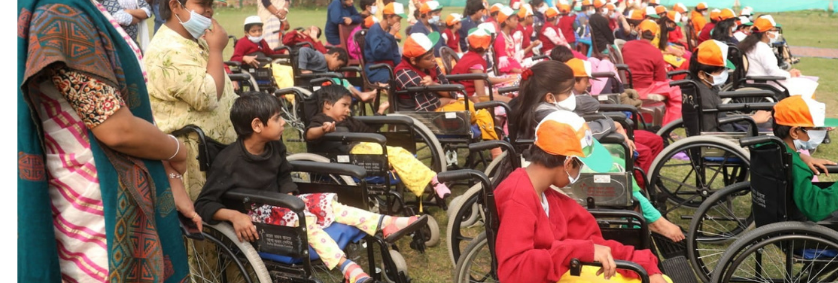Our Blog

17May 2022
How Are the Students With Multiple Disabilities Supported?
In a literal sense, multiple disability is a term that refers to more than one disability. But the Individuals with Disabilities Education Act (IDEA), has given a much technical meaning – multiple disabilities is when the children are having two or more disabling conditions affecting their learning procedure and more such vital life functions.
Many children are diagnosed with multiple disabilities, but the NGO staffs have taken the initiative to impart education to them by setting up homes in specific parts of the country.
Multiple Disabilities vs. Multiple Diagnoses
Multiple disabilities and multiple diagnoses share a list of differences. The reason is the child could have multiple diagnoses due to being treated by multiple practitioners, but they cannot be categorized into multiple disabilities categories.
For instance, when a child already with high functioning autism spectrum disorder could collect additional diagnoses like social communication disorder, sensory dysfunction and social anxiety – before being ultimately diagnosed with autism. The additional diagnoses describe the symptoms encompassed in autism spectrum disorder.
The students under the multiple disabilities category face difficulties in receiving education if it has been designed for addressing any one of the disabilities. Hence, a child with cerebral palsy and a specific learning disability is actually facing cognitive challenges and sensory impairments like visual impairments. Nevertheless of their impairments, the NGO members are taking steps by deciding on education programs at their established homes for children with disabilities in certain locations in India.
A number of situations exist where two disabilities might not be taken as multiple disabilities. For instance, visual impairment and hearing impairment might be listed as separate disabilities, when a child is having both together, but the child cannot be categorized into multiple disabilities.
Rather, deaf-blindness is said to be its own specific disability. At the same time, a child having attention deficit hyperactivity disorder (ADHD) and sensory challenges are not the ones with multiple disabilities, since their two disabilities are addressed in the ADHD classroom.
How Are the Students With Multiple Disabilities Taught At the Specifically Set Up Homes?
At large, the students suffering from multiple disabilities are seen to have severe limitations in their walking, and talking abilities as well as with peer engagements. They might even undergo severe cognitive challenges. Hence, at the NGO homes, the extremely highly trained teachers are appointed who use a list of specialized tools for teaching them. They depend on technologies and additional resources necessary for augmentative and alternative communication.
For a child who cannot speak or who is having difficult physical movements, the teachers abide by the following strategies –
1. Using simple picture cards
2. Incorporating keyboards with specialized interfaces for supporting the children with fine motor difficulties
3. Using devices to help them with text-to-voice, picture selection and other communication forms.
Added to these mediums, the students having severe multiple handicaps also benefit from a range of teaching tools, like –
a. Speech to text technologies
b. Education apps supporting the pre-writing and writing process
c. Curricula offer differentiated options when the students need different learning needs.
Visual and hearing impairments cause those students to handle a lot of challenges due to their conditions. While feeling sympathized is not the end, allowing them to be educated and be inclusive is more important. NGO staffs indeed deserve special thanks for their programs and classes for children with disabilities. Each recruited teacher ensures giving equal attention to the students for them to learn with clarity.
SHARE THIS
0 Comment(s)
Leave a Comment
Latest Articles
-
How NGOs Help Elevate The Condition Of PWDs?
18th Mar, 2024 -
The Role Of Community-Based Rehabilitation Program......
08th Mar, 2024 -
How NGOs For Disabilities In India Champions For I......
16th Feb, 2024 -
The Role Of NGOs In Development Of Children With D......
05th Feb, 2024 -
How The Changing Rural Education System Is Shaping......
12th Jan, 2024






